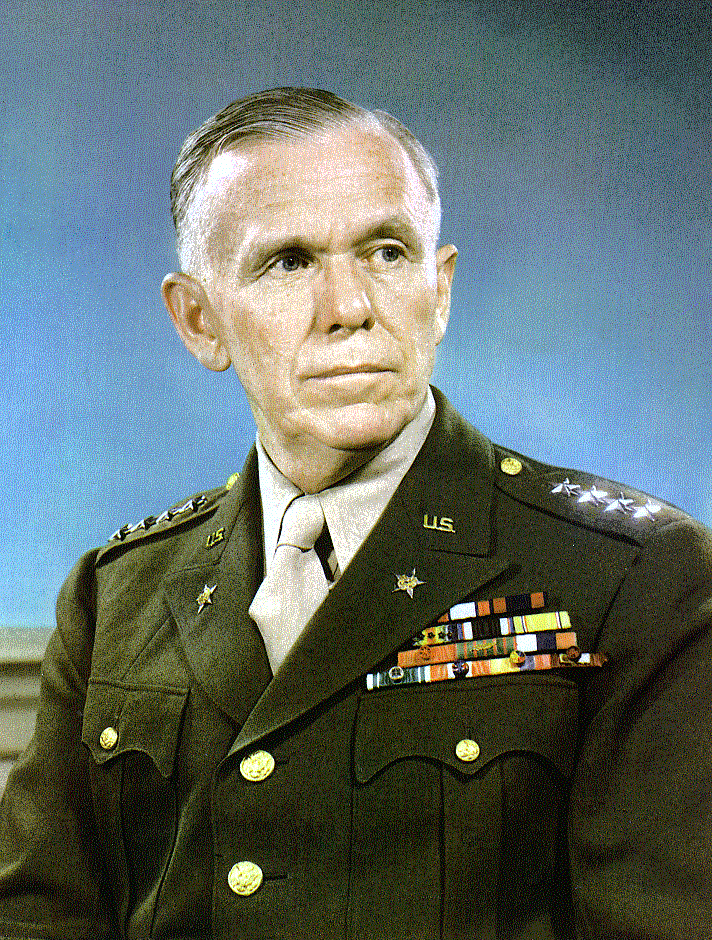George C. Marshall (1880 – 1959) was the Chief of Staff of the US Army and recipient of the 1953 Nobel Peace Prize.
Marshall was chosen by President Roosevelt to serve on the Top Policy Group, which was tasked with the oversight of the atomic program. Along with Secretary of War Stimson, he was responsible for amassing funds for the secret project, which was no easy feat given the level of secrecy required.
In terms of military mobilization, Marshall planned the intelligence operation dubbed the Alsos Mission. At the time, there existed a growing fear that the Germans dangerously ahead of the Americans in the race for a nuclear weapon. In order to determine how rational these fears were, Marshall proposed a plan in which Allied scientists of the Manhattan Engineer District would conduct investigation under the protection of armed personnel. The mission was conducted in three phases, beginning with Alsos I in Italy, then Alsos II in France, and finally Alsos III in Germany.
Beyond these roles, Marshall’s part in the Manhattan Project was largely indirect. The General delegated authority concerning the construction of the atom bomb to General Leslie Groves.
Later in the war, his primary task was to plan a mainland invasion of Japan for November 1, 1945, in case it was required. He believed that the decision of whether or not to use the A-bomb was a political decision, rather than a military one.
Following Marshall’s return from the war, President Truman appointed the General as Secretary of State. While in this role, he was instrumental in designing the Marshall Plan – the post-war effort to rebuild Western Europe.





